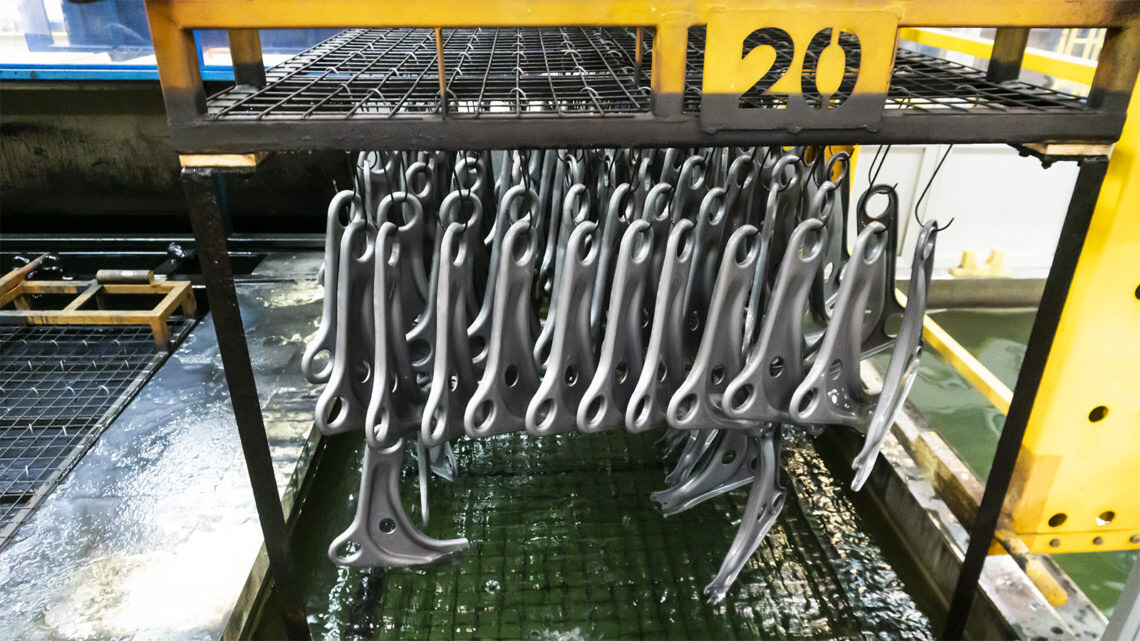
What is Cataphoresis
Cataphoresis coating, also known as electrophoretic coating, is a water-based coating method based on electrochemical principles for metal-surfaced materials. The movement of liquids under the influence of an electric field, rather than the movement of particles, is also called electroosmosis. Cataphoresis, that is, electrophoretic coatings, are also referred to as cataphoresis paints/primers in the literature due to the properties of the coating. The name cataphoresis comes from the cathodic process that occurs.
Cataphoresis coatings are used especially in the automotive industry and as a first coat to increase the corrosion resistance of industrial products. The main advantages of this process can be listed as the use of coating materials that can be applied effectively, allowing the automation of metal plating process with complex surface shape, and low pollution.
Cataphoresis Coating Properties
Some features of the cataphoresis coating system;
- Does not contain lead and tin,
- High efficiency,
- Low solvent emission,
- Low waste,
- HAPS compliance,
- Low density,
- Low firing temperature (150 ºC)
- Cross cut adhesion,
- High production speed,
- Homogeneous film thickness,
- Perfect coating of complex, recessed products
Surface Preparation Steps Before Cataphoresis Coating Process
Some of the purposes of surface preparation can be stated as:
1) To increase the surface adhesion of the coating.
2) Increasing resistance to corrosion.
3) Minimizing the reactions between the material and the coating made.
4) To clean the surface of the material to be coated.
Before the cataphoresis coating process, we follow the following process steps. These:
1. Degreasing
2. Rinse
3. Activation
4. Phosphate Coating
5. Rinse
6. Passivation
7. Deionized Rinse
Degreasing
Degreasing is the first step in surface preparation, and surface cleaning affects all subsequent steps. Therefore, it is considered the most important preparatory step before staining. Nowadays, for environmental reasons, degreasing is usually carried out using only aqueous solutions. A clean surface is one that is free from oil, grease and any surface contamination. The degreasing process uses alkaline detergents to keep metal particles, paint contaminants such as weld paint, and inorganic materials away from the metal. Surfactants, on the other hand, remove oils, greases and organic wastes from metals. This must be done thoroughly to avoid the risk of swelling or abrasion under the electrophoretic coating. The degreasing process can be applied in two ways as dipping and spraying.
Rinse
Rinsing is critical to the coating process and is often overlooked or performed in an uncontrolled manner. This process aims to minimize the transfer of degreasing chemicals to the downstream vessels.
The rinse water is used for rinsing before and after phosphating. City water or well water is generally preferred for rinsing before phosphating. The rinse water must have certain properties, e.g., hardness of 10-20 F, chloride concentration less than 40 mg/l and sulfate concentration (SO₄) less than 40 mg/l. After phosphating, the surface should be thoroughly cleaned with rinsing water. The quality of water used for rinsing should be deionized water. In order not to pollute the pool after the passivation process, it is recommended to take a passivation bath at the passivation exit.
Activation
The activation bath is an important step before the phosphating process and ensures the formation of a crystalline structure on the coating material. In this process, an initial reaction occurs in the activation bath and reduces the weight on the surface of the coating material. The purpose of the activation bath is to prepare the surface of the coating material and to ensure the formation of a homogeneous crystal layer coating.
Phosphate Coating
Phosphating is one of the most widely used methods today and is usually applied as a protective layer under paint. It can be carried out by both dipping and spraying methods. The phosphating process aims to form zinc phosphate crystals by etching the iron surface after the degreasing and activation stages. In this way, the coating with the best corrosion performance is provided.
Phosphate coatings are commonly used on ferrous and non-ferrous metals for metal pretreatment and surface treatment. The reasons why they are preferred in the automotive and white goods industries are that they are economical, high working speed, good corrosion resistance, high wear resistance, good adhesion properties and lubricity.
Passivation
Passivation is used to increase corrosion resistance and remove surface residues. In addition, the passivation process aims to prevent the formation of rust on the surface by passivating the surfaces that are not coated with phosphate. After the coating process, the surface of the metal material is cleaned to get rid of unreacted coating chemicals and is cleaned again after the passivation process. It is important to use an effective rinsing process to achieve a quality phosphating result.
Deionized Rinse
One reason for rinsing with distilled water before electrophoretic coating is to prevent the passage of ions such as Ca, Mg into the electrophoretic coating bath. If these ions remain on the crystal phosphate surface, they may adversely affect the adhesion performance after electrophoretic coating. Therefore, the conductivity of deionized water 31 used in the coating system must be below a certain level. Generally, a conductivity measurement of less than 40 μs/cm at 20 °C is accepted.
It is important that we follow the process steps before cataphoresis coating in this order, as they determine the quality of the coating.
Thanks!